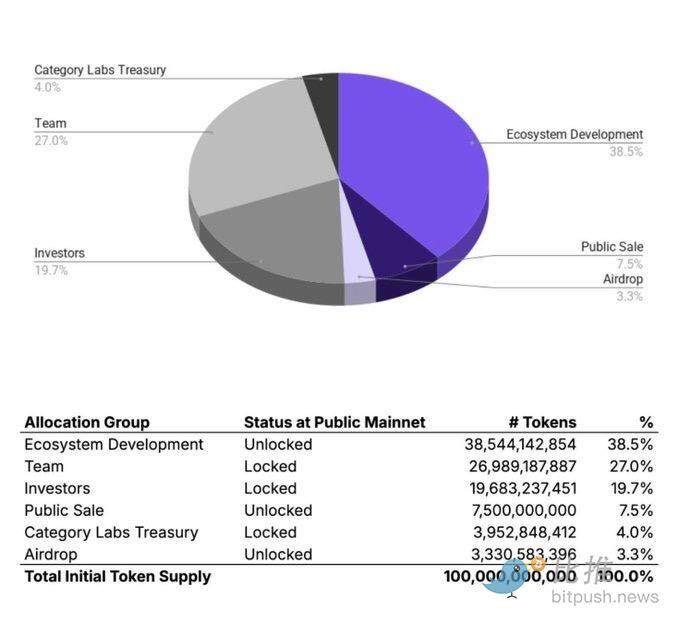Original Author: Seed.eth
In the past few years, the "new token launch" scenario in the cryptocurrency primary market has always been in a regulatory gray area. Since 2018, U.S. users have been almost completely excluded from the token issuance process. However, this pattern is now being broken.
Less than a month after spending $375 million to acquire the on-chain fundraising platform Echo, cryptocurrency exchange Coinbase has taken another key step. Overnight, its official token sales platform announced the reopening of compliant participation in token launches for U.S. retail investors.

Coinbase New Token Launch: A Structural Shift
1. From Lottery to Algorithmic Distribution: Enhancing Fairness for Retail Participation
Previously, mainstream platforms (such as Binance Launchpad and OKX Jumpstart) mostly adopted "lottery" or "first-come, first-served" mechanisms, with project teams more inclined to attract large investors, leaving ordinary users' chances of winning largely to luck.
The platform launched by Coinbase employs an "algorithmic distribution" mechanism, prioritizing small investors' subscriptions and gradually expanding to larger amounts. This design lowers the financial threshold and curbs the space for high-frequency arbitrageurs, providing retail investors with a more genuine opportunity to participate.
2. Lock-up and Anti-Arbitrage Mechanism: Encouraging Long-term Participation, Avoiding Immediate Sell-offs
Coinbase sets a mandatory lock-up period for project teams—within six months after issuance, project teams and their affiliates are prohibited from conducting over-the-counter transactions or selling tokens. At the same time, the platform introduces incentive constraints on user behavior: if users sell their acquired tokens within 30 days of listing, they will be automatically allocated fewer tokens in the future.
3. Standardized Information Disclosure: Informed Decision-Making, Not Blind Following
On the Coinbase platform, project teams must disclose detailed information, including token economic models, use of funds, team backgrounds, development roadmaps, and potential risks. This disclosure standard is significantly higher than the information depth currently required by most exchange Launchpads.
While other platforms also require some disclosure, most focus on marketing materials and basic data, whereas Coinbase enforces standardization, aiming to align with the prospectus of the IPO market. This helps investors truly understand the projects they are participating in, rather than betting solely based on "community hype" or "FOMO emotions."
4. Decentralized Participation Mechanism: Decentralized Arbitrage Incentives, Returning to Value Judgment
Currently, most exchanges require holding platform tokens (such as BNB or OKB) to participate in new token launches, forcing users to purchase platform ecosystem assets to gain eligibility, thereby exacerbating price volatility and amplifying risks.
Coinbase breaks this "token economic model dependency": it does not require users to lock up any platform tokens; participation only requires USDC, and there are no fees throughout the process. The platform's revenue comes from a fixed percentage service fee paid by project teams. This mechanism allows "new token launches" to return to their essence—selecting projects rather than speculating on platforms.
First New Token Launch: Is Monad Worth Participating?
The first project on the Coinbase token sales platform is Monad ($MON), a high-performance public chain currently under development, focusing on parallel computing and extremely high transaction throughput, fully compatible with the Ethereum Virtual Machine (EVM). Monad is backed by several well-known institutional investors, including Jump Trading, Placeholder, Lattice, and Dragonfly.

The public offering price is set at $0.025, which is significantly discounted compared to the previous pre-market trading price of about $0.06. The market expects a short-term price increase of 2-3 times, especially under the halo of Coinbase's launch.
However, it is important to note that Monad is only releasing 7.5% of its total supply this time, with a valuation of about $2.5 billion, which is relatively high among similar L1 projects that have not yet launched on the mainnet. Additionally, the ecosystem has not yet started, and the development progress is still in its early stages, leaving future performance uncertain.
Moreover, the algorithmic distribution mechanism employed by Coinbase will prioritize small applications, so even if users win, their allocation is usually small, limiting actual investment opportunities.
Therefore, for ordinary investors, Monad is a potentially promising project, but it does not equate to a "sure win." If participating, it is advisable to control the subscription amount, view the project's development with a medium to long-term perspective, and pay attention to its ecosystem development after the mainnet launch.
The Era of Intense Competition Among CEXs
Coinbase's latest move is not an isolated case. In fact, in recent years, most mainstream exchanges have been continuously ramping up their efforts in the "token launch" arena, from project selection and financing design to trading launch and ecosystem support, gradually building a "launch closed loop." Well-known examples of this trend include Binance Launchpad, OKX Jumpstart, and Bybit IDO.
This evolution from "trading matching platform" to "full-chain service provider for the primary market" is both a result of the exchanges' own business expansion and reflects the cryptocurrency industry gradually entering a more structured and standardized period.
Here is a comparison of several leading exchanges:

It can be seen that the biggest difference between Coinbase and other platforms is that its design approach is closer to the traditional financial market's "IPO + allocation + lock-up" process, attempting to guide the entire token issuance ecosystem from the previous "speculative logic" to "institutional building."
Coinbase is not replicating Binance's success but is carving out a new path, building a new type of token issuance route that is more suitable for compliant users and aimed at long-term investors. The essence of this model is to inject stability and predictability into crypto assets through standardized processes and risk control systems.
For the entire cryptocurrency industry, Coinbase's issuance platform not only helps restore retail investors' confidence but may also become the "front door" for quality projects to enter the market in the future, reducing gray paths that bypass regulation and establishing a new trust foundation for the primary market.
Can an Institutionalized Cryptocurrency Primary Market Emerge from Here?
The industry currently urgently needs blockbuster projects and a system that allows ordinary people to participate fairly and legally in token issuance. Coinbase may be paving a new way for this.
Rather than calling it an "innovation in new token launches," it is more accurate to say that Coinbase is posing a question: Can the early financing mechanism of Web3 have a more orderly alternative than speculation, a fairer alternative than lotteries, and a more rational alternative than blind investments? It may not succeed immediately, but at least it has opened a door. Whether this door can become an entry point for mainstream compliant users and quality projects in the future remains to be seen.
However, before the feast begins, we might need to pour a glass of cold water: can this market, which is already saturated with new tokens, really be saved by yet another launch platform? Coinbase has restructured the rules of issuance, but perhaps its biggest challenge is finding truly valuable new assets for a saturated market.
免责声明:本文章仅代表作者个人观点,不代表本平台的立场和观点。本文章仅供信息分享,不构成对任何人的任何投资建议。用户与作者之间的任何争议,与本平台无关。如网页中刊载的文章或图片涉及侵权,请提供相关的权利证明和身份证明发送邮件到support@aicoin.com,本平台相关工作人员将会进行核查。




